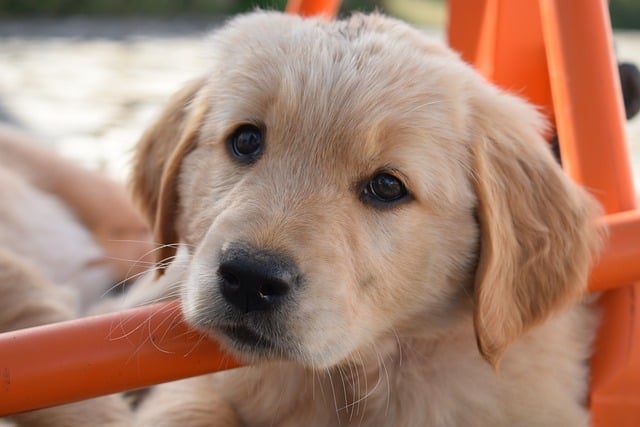
How can I tell if my dog's heatstroke is serious
Let’s be real: It’s a sticky August morning in Los Angeles, and you took your 2-year-old Golden Retriever, Max, for a walk a little later than usual
How to clean dogs’ teeth if they won’t let you? It’s a Sunday evening, and you’re kneeling on the kitchen floor with a dog toothbrush in one hand and a bag of chicken treats in the other. Your 3-year-old terrier mix, Rocky, is backed into the corner, ears flattened, growling softly as you inch closer. “C’mon, buddy, just a quick brush,” you plead, but he darts under the couch, leaving you holding a toothbrush and a sigh. For new dog owners in the U.S., this dance is all too familiar—but there are gentler ways to keep those chompers clean, even for the most resistant pups.
Dogs resist teeth cleaning for good reasons, and it’s rarely about being “stubborn.” Most often, it’s fear of the unknown: a cold brush, strange motions near their sensitive mouth, or even a past ouch (like a accidental poke) that taught them to avoid it. Some dogs have tender gums from early plaque buildup, making touch painful. But here’s the thing: Skipping cleanings lets plaque harden into tartar, which irritates gums, causes bad breath, and can lead to tooth loss or infections that spread to the heart. Think of it like skipping your own dentist—small issues become big problems fast. The key is to turn the process into something Rocky wants to do, not something he fears.

Start with “desensitization training”—fancy words for “taking it slow.” For the first week, just hold the toothbrush (or a soft finger brush) and let Rocky sniff it. When he sniffs without pulling back, reward him with a tiny treat and a high-pitched “Good boy, Rocky!” Repeat this 5 times a day, keeping sessions under a minute. Next, touch the brush to his cheek, then his chin, rewarding each step. Once he’s comfy with that, gently lift his lip and rub the brush along one front tooth—just one—then celebrate like he won a trophy. Over two weeks, work up to 5 seconds of brushing, always stopping before he gets stressed. If he pulls away, don’t chase or yank—take a break, reset, and try again with extra treats.
For dogs who flat-out refuse brushes, try alternatives. Dental wipes (soft, pre-moistened pads) are less intimidating—wipe along his gums for 10 seconds while he’s relaxed on the couch. Add a few drops of enzymatic dental water to his bowl; the enzymes break down plaque while he drinks, no fuss needed. Rubber dental toys with nubs (like Kong’s dental line) also work—Rocky chews, and the nubs scrub his teeth as he plays. Pair these with praise: “Wow, Rocky, you’re keeping those teeth sparkly all by yourself!”
Now, tie this to responsible care. In the U.S., rabies vaccines are non-negotiable—Rocky needs his shots to stay healthy, and a vet checkup is the perfect time to ask about dental health. When you take him for walks, always pack poop bags; even a “tooth-resistant” dog leaves waste, and fines in Los Angeles hit $200 for skipping this. Culturally, never scold or force him—yelling will make him associate teeth time with fear, not fun. Instead, end every attempt (even a failed one) with a treat and a pat. In apartments, stick to quiet cleaning times—dental wipes or water additives won’t disturb neighbors, unlike wrestling matches at 7 a.m. At the dog park, a quick wipe before play keeps his breath fresh, making greetings friendlier for other pups and owners.
Cleaning a resistant dog’s teeth takes patience, not force. With small steps, lots of treats, and gentle alternatives, you’ll turn “no” into “okay, but only for a treat”—and keep Rocky’s smile healthy for years to come.

Let’s be real: It’s a sticky August morning in Los Angeles, and you took your 2-year-old Golden Retriever, Max, for a walk a little later than usual

You're enjoying a summer afternoon at the park when you notice your dog has stopped panting and appears disoriented - their gums are bright red

Let’s paint the picture: You’re in your Denver apartment, watching your 4-year-old Boston Terrier, Ruby, plop down mid-play session with her favorite toy

Many dog owners notice their pets nails seem shorter after regular walks,but how much does this daily activity actually help?The answer depends on where you walk—concrete sidewalks or asphalt streets gently file nails as a dog's paws hit the ground

Most dog owners notice their pup scooting across the carpet at some point, but few connect it to impacted anal glands. These small sacs near a dog’s rectum secrete a scent for marking territory

Most vets agree that regular dog teeth cleaning is key to avoiding painful dental issues later. For healthy adult dogs, a professional cleaning at the vet’s office every 12 to 18 months usually works well.